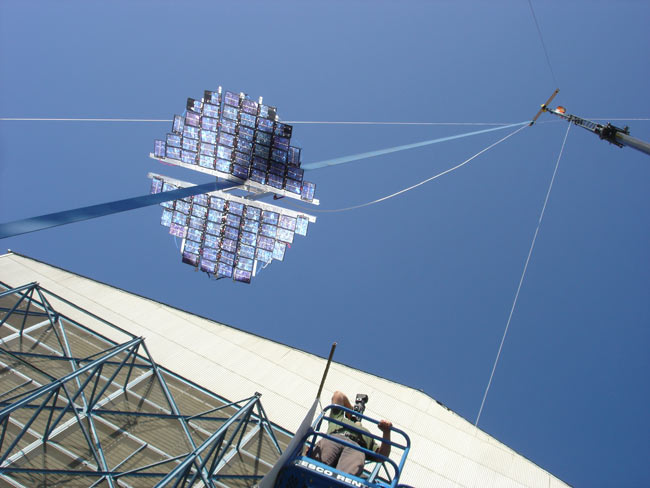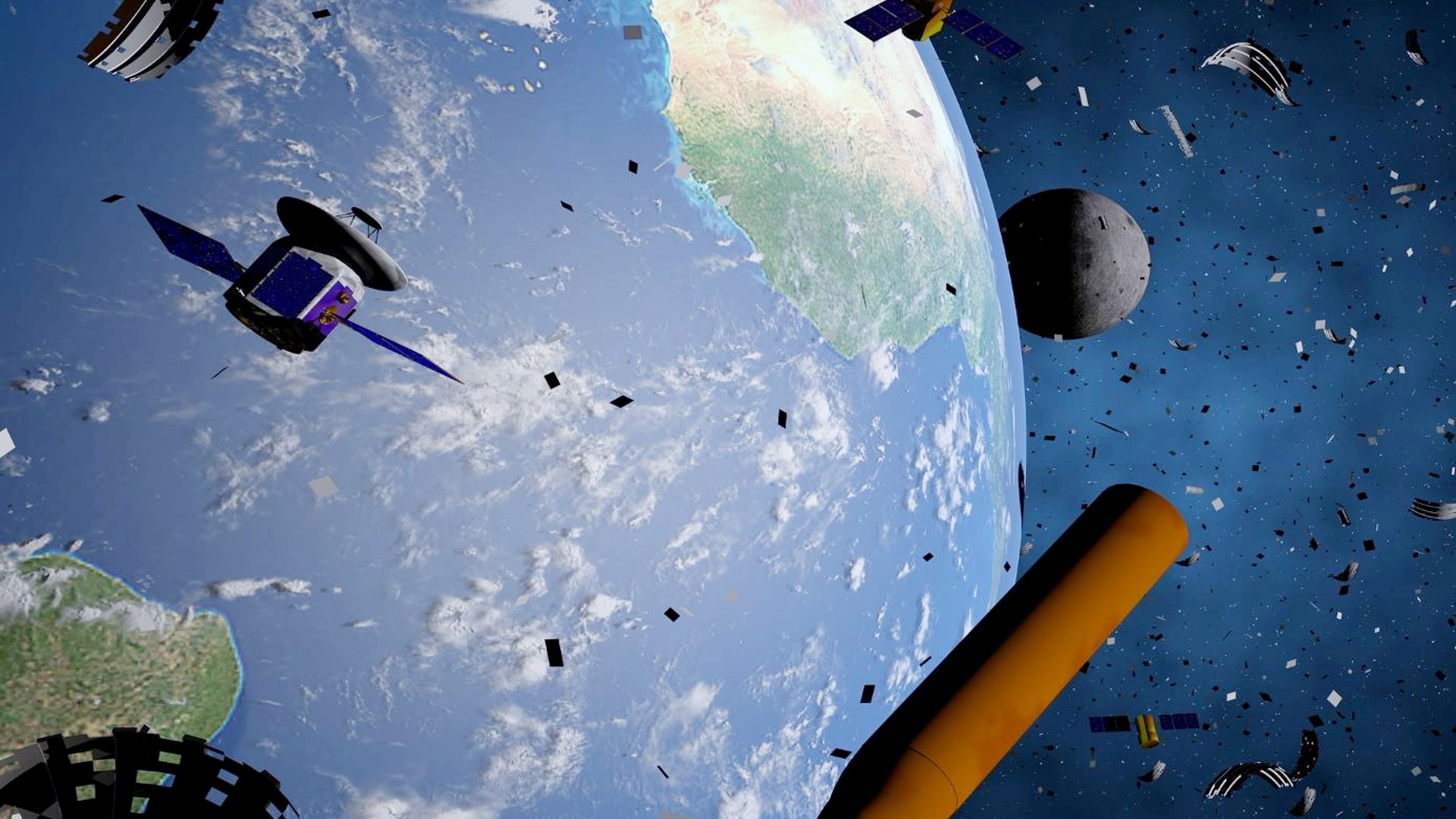NASA Plans Six New Centennial Challenges

This story was updated at 6:09 p.m. EST.
NASA is drawing up plans for six newCentennial Challenges as part of the agency's series of contests that offerscash prizes for technological achievements.
The space agency is seeking commentsfrom potential competitors and partners on draft rules for each of the proposednew Centennial Challenges. The contests range from the development ofaffordable spacesuits to launching fuel pods into orbit or flying acontrollable vehicle driven by a solar sail.
Prizes for the planned challenges,which are not yet finalized, could range from $500,000 for the spacesuitcontest to $5 million for the fuel pod contest, according to the draft rulesreleased by NASA's Exploration Systems Mission Directorate.
"These are some of our first large,million-dollar and multi-million dollar prizes," Brant Sponberg,NASA program manager for the Centennial Challenges effort, told SPACE.com. "I think we're in theballpark with a lot of these prizes, but we're not on the pitcher's mound yet."
The current draft rules for the sixnew contests were developed by in-house by NASA personnel, Sponbergsaid, adding that before the agency launches the competitions officially,feedback from those who will compete in them is vital. "The whole idea is to goout eternally and to have the people competing for this, or whoever, let usknow what needs tweaking."
While the new challenges are not yetofficial, NASA announced a series of contests throughout 2005 that covered abroad swath of technologies that ranged from better spacesuit gloves to unmannedvehicles for lunar and planetary exploration. The program has secured $10million for current contests and hopes for an additional $10 million to supportfuture competitions, Sponberg said.
Breaking space news, the latest updates on rocket launches, skywatching events and more!
The space agency also held its firstcompetition - the 2005Beam Power and Tether Centennial Challenges - last year, in which 11 teamsvied for two $50,000 prizes. Both purses went unclaimed, with even larger cashprizes promised for this year's contest, NASA officials have said.
Other challenges, such as thosecharging entrants to develop suborbitalrockets, lunarexcavators and machines to cull oxygen frommock lunar regolith, have yet start competition. Thefirst spacesuit glove competition, a partnership with the Volanz AerospaceInc., is set for November 2006, to be followed by the lunar excavationchallenge in late 2006 or early 2007, NASA officials said.
Meanwhile, Centennial Challengeprogram officials are seeking new partners for the upcoming contests, Sponberg said. When new partners sign onto to a specificchallenge will determine how soon the contest can begin in earnest, he added.
Here's a brief description of eachof NASA's new planned challenges:
- Fuel Depot Challenge: Expected to award a $5 million prize to the first team to build, launch and demonstrate a sub-scale facility that could store or produce liquid oxygen and liquid hydrogen - used to fuel spacecraft - in Earth orbit. In November 2005, NASA chief Michael Griffin said future space missions would rely on privately built fuel stations for resupply.
- Human All-Terrain Vehicle Challenge: With NASA aiming to return astronauts to the Moon by 2017, knowing how to move humans from place to place will be imperative. This $1 million contest would challenge inventors to build human-driven rovers that are agile, easy to stow and reliable.
- Low-Cost Space Pressure Suit Challenge: Aimed at increasing the industrial base for human spaceflight and jump-starting development for commercially available spacesuits, this $500,000 competition would reward the first team to build a spacesuit that meets design and test requirements - which includes a depressurization test on an instrumented mannequin. Teams must also sell a certain number of spacesuits to demonstrate cost effectiveness.
- Lunar Night Power Source Challenge: NASA is promoting the development of power systems capable of operating for extended periods in a harsh environment. To win a $500,000 prize, innovators are expected to be the first to demonstrate a rechargeable power source that provides power over 14 days - about one lunar night- while meeting volume and heat requirements.
- Micro Reentry Vehicle Challenge: Most students have encountered the egg-drop in one way or another, but this Centennial Challenge would take it to the extreme. The planned contest would task entrants to build a vehicle that could deliver at least six of 12 common hen eggs to Earth safely - and undamaged - from low-Earth orbit. The first to do so would nab a $2 million prize. Such reentry systems could lead to a routine sample-return method from orbital space stations, NASA officials said.
- Station-Keeping Solar Sail Challenge: Aimed at promoting the development of working solar sails and exploiting novel spacecraft orbits, this challenge would offer a $2.5 million purse for each of two distinct achievements, according to its description. The first would challenge a team to be the first to successfully deploy a solar sail, demonstrate an acceleration change and fly through a designated target. The second contest would challenge competitors maintain a sail's position above or below a target area for 90 days.
Full draft rules for each the sixplanned challenges above can be found by clicking here.All commentsmust be submitted by 5:00 EDT (2100 GMT) March 27, 2006, NASA officials said.

Tariq is the award-winning Editor-in-Chief of Space.com and joined the team in 2001. He covers human spaceflight, as well as skywatching and entertainment. He became Space.com's Editor-in-Chief in 2019. Before joining Space.com, Tariq was a staff reporter for The Los Angeles Times covering education and city beats in La Habra, Fullerton and Huntington Beach. He's a recipient of the 2022 Harry Kolcum Award for excellence in space reporting and the 2025 Space Pioneer Award from the National Space Society. He is an Eagle Scout and Space Camp alum with journalism degrees from the USC and NYU. You can find Tariq at Space.com and as the co-host to the This Week In Space podcast on the TWiT network. To see his latest project, you can follow Tariq on Twitter @tariqjmalik.
